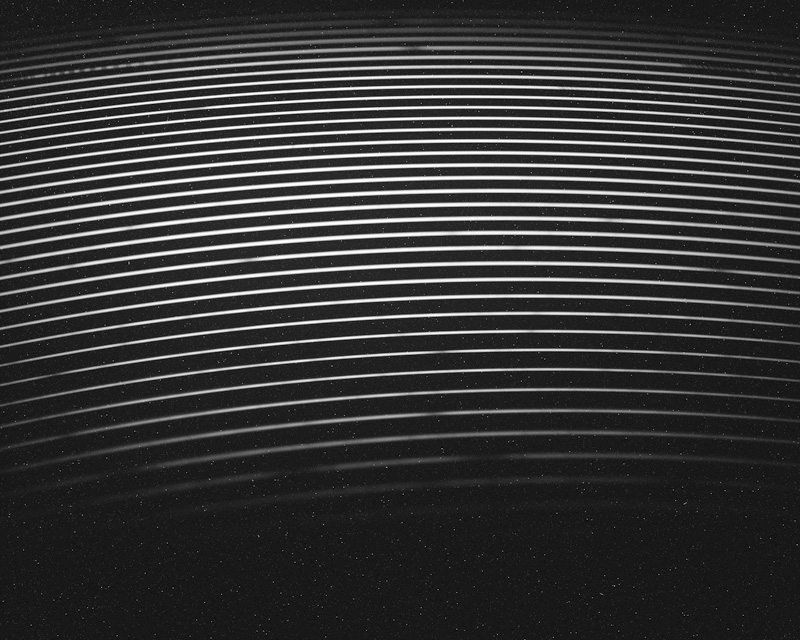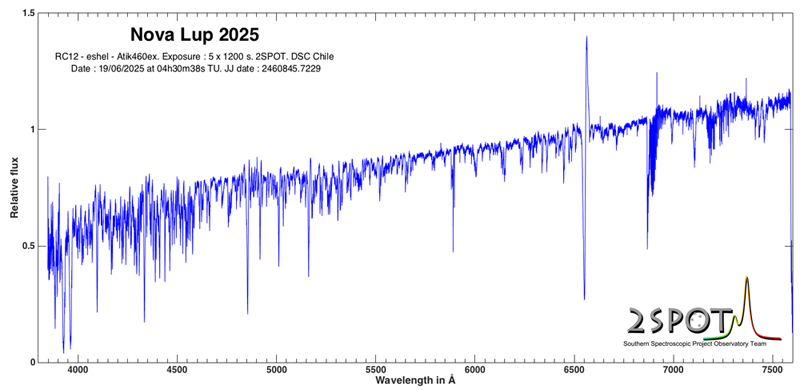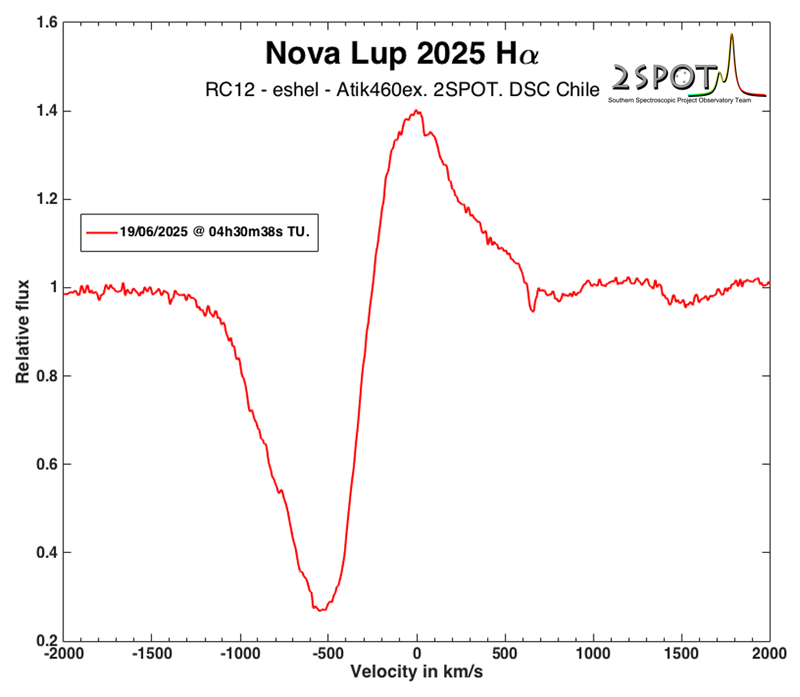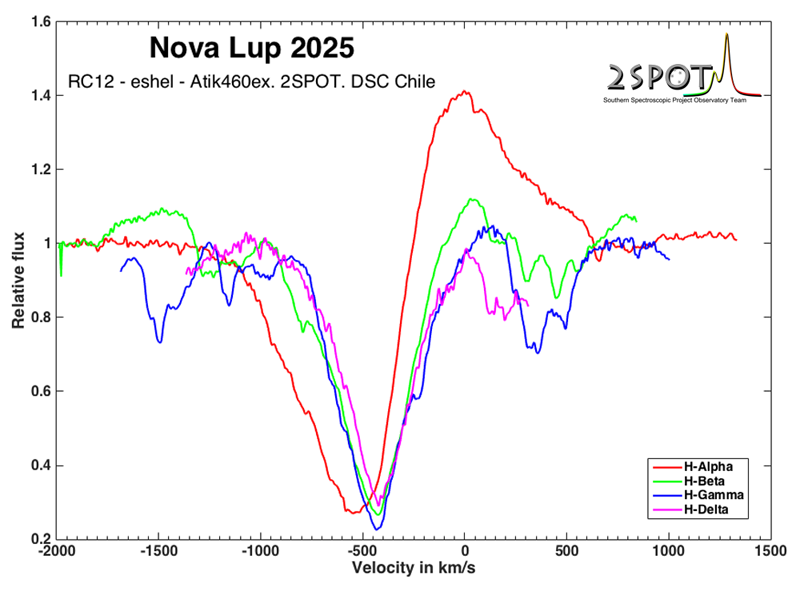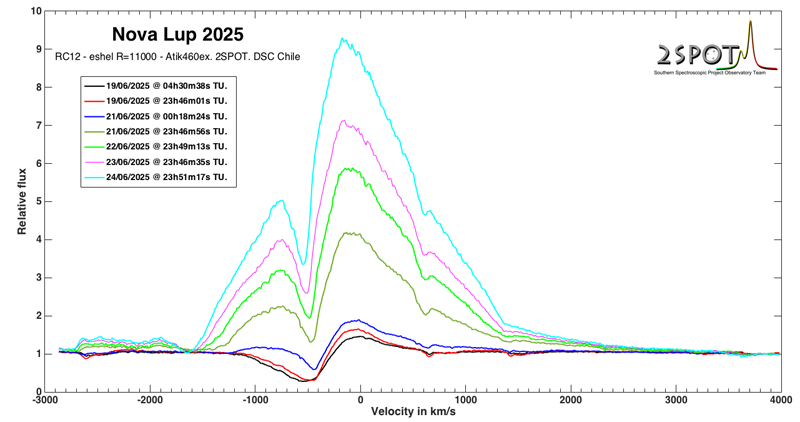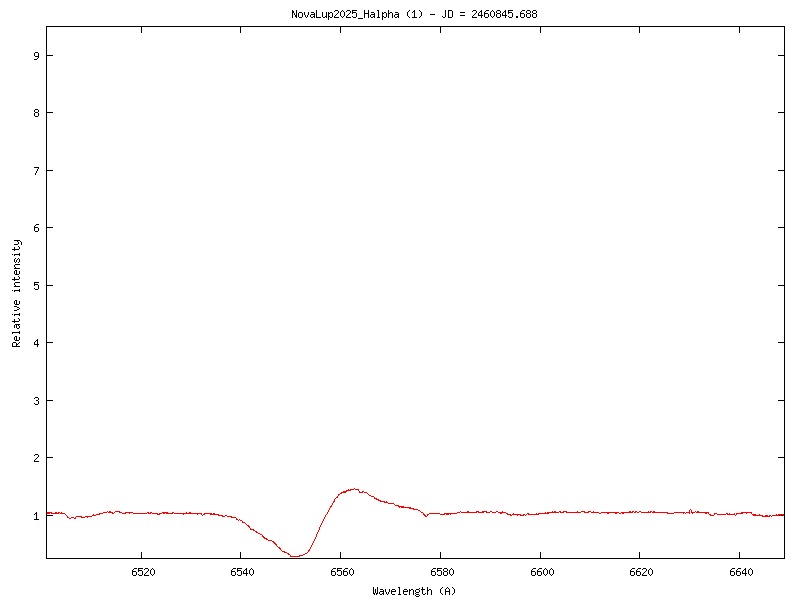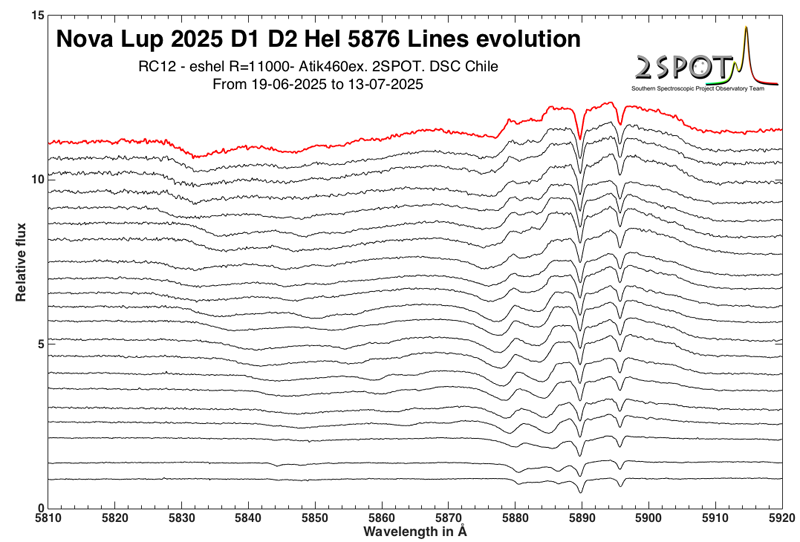Nova Lup 2025
Posted: Thu Jun 19, 2025 1:40 pm
Bright nova in Lupus
RA 15:08:03.274 DE -40:08:29.58
discovered by ASASSN (
https://www.wis-tns.org/object/2025nlr
Identified as nova by Yusuke Tampo: https://www.astronomerstelegram.org/?read=17228
First spectra secured by Keith Shank in the database: https://aras-database.github.io/databas ... p2025.html
Comments by Steve Shore:
The spectra now are important -- at high resolution -- for understanding how the recombination wave Francois described passes through the density structures in the ejecta. The effect isn't just one of temperature as the fireball expands, it's also that the ejecta have a sort of pseudo-surface -- the comoving photosphere -- that effectively screens the outer parts of the ejecta from the hard radiation of the central source. There will also be shocked gas during this phase so there'll also be particle accelerationand gamma ray emission. It should produce a Fermi detection since it seems to be close enough (although it's still much father than V339 Del or V1369 Cen, for instance). But as dramatic as the changes seem here, the most important thing is to follow this at high resolution (as high as possile) with fluxed spectra. The nova is -- it seems -- rather "ordinary" which is precisely why it's important. If bright enough to have a high resolution sequence at the initial stages. The archives, including ARAS, are full of "first spectra" with little or no history (what more than 60 yerars ago Payne-Gaposchkin compained about in "Galactic Novae" as fragmentary data (which was a much longer list than those well followed). All of our understanding is based on these sequences and if we get this right we also understand a very broad range of transients. This is also what will come from the Rubin telescope (LSST) once it starts up (if it does in this funding atmosphere and anti-science era)..
= Long term monitoring !
RA 15:08:03.274 DE -40:08:29.58
discovered by ASASSN (
https://www.wis-tns.org/object/2025nlr
Identified as nova by Yusuke Tampo: https://www.astronomerstelegram.org/?read=17228
First spectra secured by Keith Shank in the database: https://aras-database.github.io/databas ... p2025.html
Comments by Steve Shore:
The spectra now are important -- at high resolution -- for understanding how the recombination wave Francois described passes through the density structures in the ejecta. The effect isn't just one of temperature as the fireball expands, it's also that the ejecta have a sort of pseudo-surface -- the comoving photosphere -- that effectively screens the outer parts of the ejecta from the hard radiation of the central source. There will also be shocked gas during this phase so there'll also be particle accelerationand gamma ray emission. It should produce a Fermi detection since it seems to be close enough (although it's still much father than V339 Del or V1369 Cen, for instance). But as dramatic as the changes seem here, the most important thing is to follow this at high resolution (as high as possile) with fluxed spectra. The nova is -- it seems -- rather "ordinary" which is precisely why it's important. If bright enough to have a high resolution sequence at the initial stages. The archives, including ARAS, are full of "first spectra" with little or no history (what more than 60 yerars ago Payne-Gaposchkin compained about in "Galactic Novae" as fragmentary data (which was a much longer list than those well followed). All of our understanding is based on these sequences and if we get this right we also understand a very broad range of transients. This is also what will come from the Rubin telescope (LSST) once it starts up (if it does in this funding atmosphere and anti-science era)..
= Long term monitoring !
